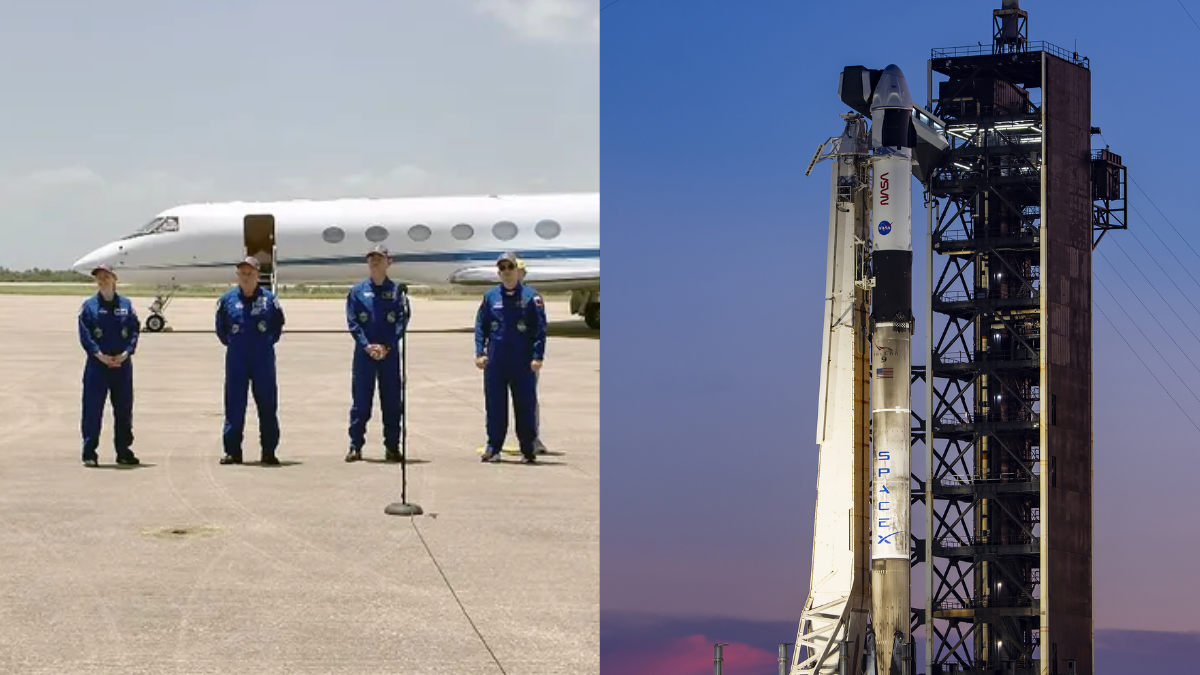SpaceX has rolled out the Falcon 9 rocket mounted with the Dragon spacecraft that will carry NASA’s next crew rotation mission – Crew-11. The mission to the International Space Station (ISS) is targeted for liftoff at 9:39 pm IST on July 31 from NASA’s Kennedy Space Center with four astronauts.
Sunset at pad 39A pic.twitter.com/gSr01sEoVa
— SpaceX (@SpaceX) July 28, 2025
Crew-11 is being commanded by NASA astronaut Zena Cardman while Mike Fincke will pilot the Dragon spacecraft. They will be accompanied by JAXA (Japan Aerospace Exploration Agency) astronaut Kimiya Yui and Roscosmos cosmonaut Oleg Platonov.
The Crew-11 astronauts flew from Houston, Texas on Sunday and landed at the launch site where they will remain in quarantine until launch day.
Timelapse of Dragon and Falcon 9 going vertical at pad 39A pic.twitter.com/OjSiqO1yya
— SpaceX (@SpaceX) July 27, 2025
On Monday, SpaceX shared a video of the Falcon 9 rocket going vertical at the launch pad on Monday in preparation for the launch. The Crew-11 mission is being launched on the Dragon spacecraft named Endeavour which has previously flown Demo-2, Crew-2, Crew-6, and Crew-8 missions, as well as private astronaut mission Axiom Mission 1.
ALSO SEE: NASA’s TRACERS Mission To Study Earth’s Magnetic Field Launches Atop SpaceX Falcon 9
Falcon 9 and Dragon roll out to the launch pad at 39A in Florida for @NASA’s Crew-11 mission to the @Space_Station pic.twitter.com/PeElJtaAyT
— SpaceX (@SpaceX) July 27, 2025
Out of the four, Fincke is the most experienced with a cumulative experience of 382 days in space. Crew-11 will be the fourth spaceflight of his career. Yui, on the other hand, will be flying on his second trip and has logged 142 days in space. The other two – Cardman and Platonov – will experience their first flight to the ISS.
Apart from being a crew rotation mission, NASA says Crew-11 will serve a bigger purpose pertaining to the Artemis program.
“During the mission, Crew-11 also will contribute to NASA’s Artemis campaign by simulating Moon landing scenarios that astronauts may encounter near the lunar South Pole, showing how the space station helps prepare crews for deep space human exploration,” the agency stated. “The simulations will be performed before, during, and after their mission using handheld controllers and multiple screens to identify how changes in gravity affect spatial awareness and astronauts’ ability to pilot spacecraft, like a lunar lander.”
ALSO SEE: Elon Musk Really Wants International Space Station Deorbited Within 2 Years; ‘Getting Too Old’
(Image: NASA/SpaceX)
